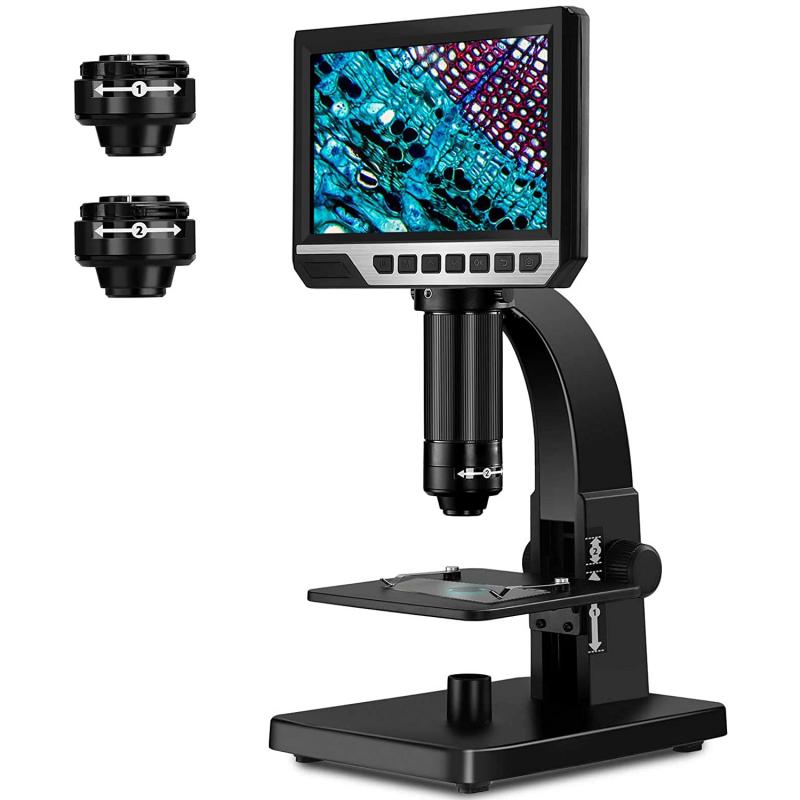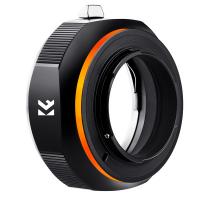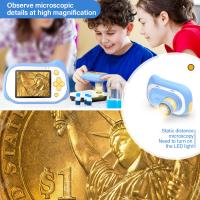Where Was The Electron Microscope Invented ?
The electron microscope was invented in Germany in 1931 by Ernst Ruska and Max Knoll.
1、 Invention of the electron microscope
The electron microscope, a revolutionary scientific instrument that has greatly advanced our understanding of the microscopic world, was invented in the early 1930s. The credit for its invention goes to two German scientists, Ernst Ruska and Max Knoll. In 1931, Ruska and Knoll successfully built the first electron microscope, which utilized a beam of electrons instead of light to magnify objects. This breakthrough invention marked a significant milestone in the field of microscopy and opened up new possibilities for scientific research.
The electron microscope has since undergone numerous advancements and improvements, leading to the development of various types of electron microscopes, such as transmission electron microscopes (TEM) and scanning electron microscopes (SEM). These instruments have become indispensable tools in various scientific disciplines, including biology, materials science, and nanotechnology.
While Ruska and Knoll are widely recognized as the inventors of the electron microscope, it is important to note that scientific discoveries and inventions often build upon previous knowledge and research. The concept of using electrons for imaging purposes can be traced back to the work of J.J. Thomson, who discovered the electron in 1897. Additionally, the development of electron optics by Hans Busch in the 1920s laid the foundation for Ruska and Knoll's invention.
In recent years, there have been ongoing advancements in electron microscopy technology. For instance, the introduction of aberration correction techniques has significantly improved the resolution and image quality of electron microscopes. Furthermore, the integration of electron microscopy with other techniques, such as spectroscopy and tomography, has expanded the capabilities of this powerful tool.
In conclusion, the electron microscope was invented by Ernst Ruska and Max Knoll in the early 1930s. Their groundbreaking work paved the way for the development of electron microscopy, which has revolutionized scientific research. The continuous advancements in electron microscopy technology continue to push the boundaries of what we can observe and understand at the microscopic level.

2、 Development of electron microscopy technology
The electron microscope was invented in Germany in the early 1930s. Ernst Ruska, a German physicist, along with his colleagues Max Knoll and Helmut Ruska, developed the first practical electron microscope at the Technical University of Berlin. Their invention revolutionized the field of microscopy by allowing scientists to observe objects at a much higher resolution than was possible with traditional light microscopes.
The development of electron microscopy technology was a significant milestone in scientific research. It provided scientists with a powerful tool to study the structure and behavior of materials at the atomic and molecular level. This breakthrough led to numerous discoveries and advancements in various scientific disciplines, including biology, chemistry, materials science, and nanotechnology.
Since its invention, electron microscopy technology has continued to evolve and improve. Modern electron microscopes are capable of achieving even higher resolutions and providing more detailed images. They have become indispensable tools in scientific research and have contributed to our understanding of the microscopic world.
In recent years, there have been further advancements in electron microscopy technology. One notable development is the introduction of cryo-electron microscopy (cryo-EM), which allows scientists to study biological samples in their native, hydrated state. This technique has revolutionized the field of structural biology and has been instrumental in determining the structures of complex biomolecules, such as proteins and viruses.
Overall, the invention and development of the electron microscope in Germany have had a profound impact on scientific research. It has opened up new avenues for exploration and has provided scientists with a powerful tool to investigate the intricate details of the microscopic world.

3、 Pioneers in electron microscopy
The electron microscope, a revolutionary tool that has transformed our understanding of the microscopic world, was invented in multiple locations by several pioneers in the field of electron microscopy. The development of this powerful instrument can be attributed to the collaborative efforts of scientists from different countries.
One of the earliest pioneers in electron microscopy was Ernst Ruska, a German physicist. In the 1930s, Ruska, along with his brother Helmut, successfully built the first electron microscope at the Technical University of Berlin. Their invention utilized a beam of electrons instead of light to magnify objects, allowing for much higher resolution and greater detail than traditional light microscopes.
Simultaneously, Max Knoll, also a German physicist, was working on a similar concept. Knoll, along with his student Heinrich von Ardenne, developed the first practical electron microscope in 1931. Their instrument, known as the "Elektronenmikroskop," was able to achieve magnifications of up to 50,000 times.
In the United States, James Hillier and Albert Prebus were instrumental in advancing electron microscopy. In 1938, they constructed the first practical electron microscope in North America at the University of Toronto. This microscope was capable of magnifications up to 7,000 times.
While the electron microscope was invented in multiple locations, it is important to note that Ernst Ruska's contributions were particularly significant. In recognition of his pioneering work, Ruska was awarded the Nobel Prize in Physics in 1986.
Since its invention, the electron microscope has undergone significant advancements, including the development of transmission electron microscopes (TEM) and scanning electron microscopes (SEM). These instruments have become indispensable tools in various scientific disciplines, enabling researchers to explore the intricate details of biological structures, materials, and nanotechnology.
In conclusion, the electron microscope was invented by multiple pioneers in electron microscopy, with Ernst Ruska, Max Knoll, James Hillier, and Albert Prebus being key contributors. Their groundbreaking work laid the foundation for the development of this powerful tool, which continues to push the boundaries of scientific exploration.

4、 Evolution of electron microscope design
The electron microscope was invented in Germany in 1931 by Ernst Ruska and Max Knoll. Ruska, a physicist, and Knoll, an electrical engineer, collaborated to develop the first practical electron microscope. Their invention revolutionized the field of microscopy by allowing scientists to observe objects at a much higher resolution than was possible with traditional light microscopes.
The early electron microscopes were bulky and required a vacuum chamber to operate. They used a beam of electrons instead of light to illuminate the specimen, and the resulting image was captured on a fluorescent screen or photographic film. Over the years, there have been significant advancements in electron microscope design.
One major development in electron microscope design was the introduction of the transmission electron microscope (TEM) in the 1930s. The TEM allowed scientists to study the internal structure of specimens by passing a beam of electrons through them. This technique provided unprecedented detail and opened up new avenues of research in fields such as biology, materials science, and nanotechnology.
Another important advancement was the development of the scanning electron microscope (SEM) in the 1960s. The SEM uses a focused beam of electrons to scan the surface of a specimen and create a three-dimensional image. This technique has been instrumental in studying the surface morphology of various materials and has found applications in fields such as metallurgy, geology, and forensic science.
In recent years, there have been further advancements in electron microscope design. For example, the introduction of aberration correction technology has improved the resolution and image quality of electron microscopes. Additionally, the development of environmental electron microscopes has allowed scientists to study specimens in their natural state, providing insights into biological processes and environmental interactions.
Overall, the evolution of electron microscope design has been driven by the need for higher resolution, improved imaging techniques, and the ability to study specimens in various conditions. The invention of the electron microscope in Germany in 1931 laid the foundation for these advancements and continues to be a vital tool in scientific research today.








































